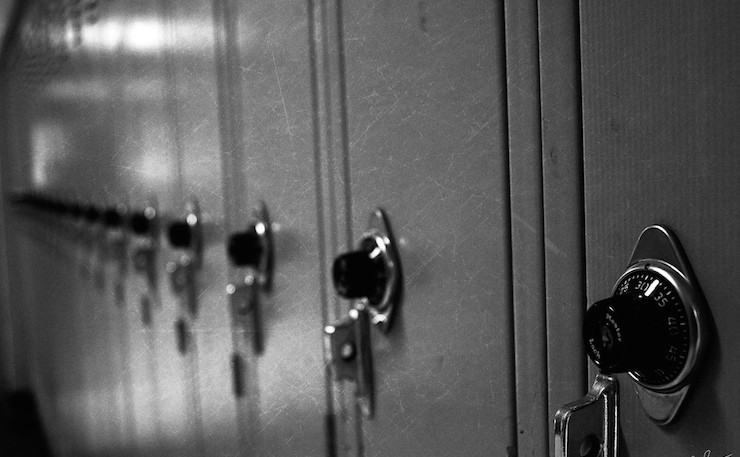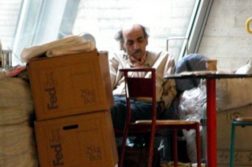Working as a teacher with children resettled in Australia and released from detention makes clear just what an impact the experience has on their lives, writes Khadija Kahill*.
The bell rings and we line up for class, the boys still bursting with energy and jostling each other after their soccer match. I share a joke with my young Burmese student and she covers her mouth with her hand and chuckles, ‘Miss!’.
In my classroom are thirteen children. Children with unique journeys to Australia, all newly arrived and dealing with what they have been through. Most have arrived with Humanitarian visas, having been processed by the United Nations and accepted by Australia whilst still living in refugee camps around the world. Some are orphans, some are asylum seekers awaiting the outcomes of their protection visa applications. They’re seeking safety in Australia.
Achol is here today. Her hair sticks out at angles and she stares out into the playground, her iPad tucked under her arm. She’s often absent. She was a refugee who was separated from her mother in Egypt after her family fled Sudan. I don’t know what atrocities she has been forced to witness or experienced, but I know she has suffered immensely.
She rarely speaks to me or other students, though we try in many ways to engage her. She likes to play soccer games on her iPad. Sometimes she plays basketball with the other kids, but she’s never really present. It’s like her body is there but her mind is not. She will stay at the language centre for twice as long as many other kids, as she’s experienced significant disruption to her learning.
This is not uncommon for children affected by war related conflict. The ongoing effects of trauma impact her ability to concentrate. She is linked with the school social worker and the Child and Adolescent Mental Health Service.
Some of the symptoms of trauma are sleeplessness, flashbacks, inability to concentrate, being withdrawn, emotional dysregulation, attachment issues, anxiety, sadness, nightmares, change in appetitive and irritability. All of these I have frequently seen in my classroom, heard about from school social workers and interpreters or read in student writing.
Dilan has his thinking-face on and his best friend, Jefferson, is decorating the borders of his writing book with water lilies. The boys are inseparable. They came to Australia by boat from Sri Lanka as unaccompanied minors when they were sixteen. ‘I can see you’re using paragraphs Dilan. Good work. Now, have you re-read it to check for capital letters and full stops?’ I ask. ‘Not yet Miss. I’m going to do,’ he says and looks at me with a big smile. He’s very shy and grapples daily with anxiety.
Jefferson is different. He’s almost like a leprechaun. He’s always smiling and laughing and infecting others with his happy-go-lucky nature. The boys love to tell me about their home city of Kandy in central Sri Lanka, traditional foods and how they miss it. As the end of the term approaches, I wonder what will happen to them as they turn eighteen. They may not be able to finish school. Their protection visa applications may be rejected. They may not be able to stay in Australia.
Lian and Khua are fifteen and from Chin state, in the north west of Myanmar on the border of Bangladesh. I am trying to teach them to be more independent learners, as they always race to finish their work. The boys knew each other when they lived in Malaysia, where they resided in indefinite transit to Australia from the age of twelve. I don’t know much more about the particulars of their journey to and arrival in Australia, but they’ve told me about the labouring jobs they had to do from a very young age, to help themselves and their families survive.
Whilst the annual refugee intake has been temporarily amended to include 12,000 Syrians, soon to arrive, the general stance of the Australian Government towards asylum seekers is appalling and affects many. Vulnerable people in detention centres – adults, children and even babies – endure human rights abuses that could and should be avoided.
Human Rights Watch acknowledges “the [Australian] government’s failure to respect the rights of asylum seekers and refugees, by processing asylum seekers offshore, turning back arriving boats and fast tracking screening measures at sea, violating Australia’s legal obligations and placing asylum seekers and refugees at great risk.”
Many children I’ve taught have experienced something they have struggled with during their young lives: family breakdown, domestic violence, bullying, physical or mental illness. All of these things impact a child’s ability to learn and to reach their full potential.
As a nation, we focus on prevention by providing services that support children, families, schools and communities. We spend time and money training staff, founding and funding organisations, raising awareness and campaigning for the rights of young people. How is it then that Australia continues to detain children and send boats back out to sea?
Two of the top priorities of the Australian National Education Agreement articulate the commitment of Australian governments to ensure that “all children are engaged in and benefiting from schooling” and that “schooling promotes social inclusion and reduces educational disadvantage of children”. The two top priorities for the Victorian Department of Education in its 2016 Strategic Plan, are “to improve the opportunities for all learners without exception” and to “boost children’s wellbeing”.
As long as children remain in detention, and boats carrying asylum seekers are turned back out to sea, these goals cannot be achieved.
*All names, including that of the author, have been changed.
Donate To New Matilda
New Matilda is a small, independent media outlet. We survive through reader contributions, and never losing a lawsuit. If you got something from this article, giving something back helps us to continue speaking truth to power. Every little bit counts.




